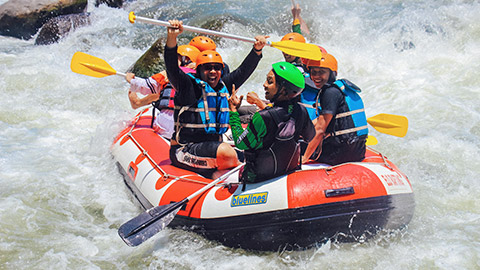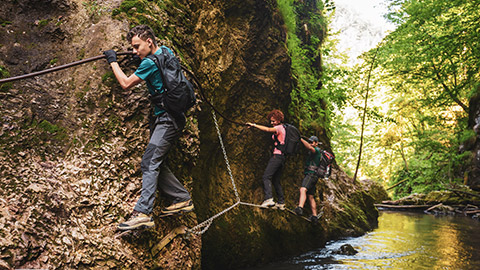Adventure activities
In this topic you will consider the application of the risk assessment and management process in ‘activity-based’ youth work. A more appropriate term is ‘adventure activity-based youth work’.
Adventure activities are specifically mentioned in the Health and Safety in Work Act 2015 (HSWA) and have a specific statutory regulation: Health and Safety at Work (Adventure Activities) Regulations 2016.1
These regulations define what adventure activities are, and what they are not. (Activities that are not regulated under the Adventure Activities Regulations are still covered under other clauses or regulations of the HSWA.)
An adventure activity is defined as an activity that meets all the following criteria:
- The activity is paid for.
- The activity is land or water based. Anything involving aircraft (planes, helicopters, hot air balloons) is not included.
- They are recreational or educational activities where participants are guided, taught, or assisted to participate.
- They are activities that deliberately expose participants to a serious risk that must be managed by approved providers. There is likely to be serious risk to any participant(s) if the activity is not managed properly by the provider.

Here are some of the examples of adventure activities listed in Schedule 2 of the Regulations:
- abseiling – only if done outdoors
- bridge swinging
- bungy jumping
- canoeing/kayaking
- canyon swinging
- caving
- glacier walking
- high ropes courses
- mountaineering
- off-road vehicle driving
- quad biking
- rock climbing
- snow activities such as skiing or snowboarding – only if done outdoors and outside patrolled areas.
Worksafe, which is the agency responsible for the approval and registration of adventure activities, states that different activities need to be assessed on a case-by-case basis. On their webpage ‘What is an adventure activity?’ Worksafe provides a table that roughly categorises different types of activities as2:
- activities that are nearly certain to be subject to the regulations
- activities that might be subject to the regulations under certain conditions
- activities that are nearly certain not to be subject to regulations.
It is up to the activity provider or operator to pass a safety audit and register their adventure activity with Worksafe. However, it is helpful to be aware of which types of activities come under the Adventure Activities Regulations because Worksafe recommends that you check that the operator providing these activities is properly registered before you book or contract them.
Task: Refresh your understanding
The key focus of this topic is health and safety compliance in situations where youth are participating in high-risk activities.
Before you start, take some time to refresh your understanding of the Health and Safety at Work Act (2015).
Think about the obligations that are set out in this legislation, and roles and responsibilities you have as a youth worker. Reflect on the Risk Assessment and Management Strategy (RAMS) that was covered in the last topic:
Keep these things in mind as you work through this topic.

The organisation you work for has organised a high ropes course activity for a group of youth. The activity will be undertaken at a local adventure park about one hour’s drive from the youth centre. The road is winding and unsealed in parts. The adventure park business is approved and registered by Worksafe and meets health and safety requirements.
You are taking a group of 25 young people on this activity. You will travel to the adventure park in three vans. Each van is driven by an employee of the youth centre. A total of five staff members are supporting the young people. The young people are sorted into groups with a staff member responsible for each group.
The duration of the activity is four hours plus travel.
Task: Identify hazards and risks
Do a quick brainstorm and jot down all the hazards and risk you can identify.
Make two lists: one list of the hazards/risks the youth worker(s) will manage, and the second list for the types of hazards/risks that might be managed by the adventure park.
The completed risk assessment Task: RAMS form for a high-risk activity
Imagine that you have completed the risk assessment process for the planned activity in the scenario.
- What hazards have you identified?
- What controls would you put in place? Why do you think they are appropriate and valid?
A sample RAMS form has been completed for the scenario activity. The form used is an example taken from the Auckland Youth Mission, who offer a template on their website for others to use.3
Review the completed form. Think about the following questions while you review:
- Do you think the completed RAMS form provided as an example is detailed enough? Compare it with the RAMS form used for the previous topic.
- Do the listed hazards and controls match with what you had in mind?
- Are the controls in the example RAMS form appropriate and sufficient?
- Are there additional hazards or controls you have identified?
You are now ready to complete Task 2 of Assessment 2.5.
Read the assessment instructions and complete the task.

